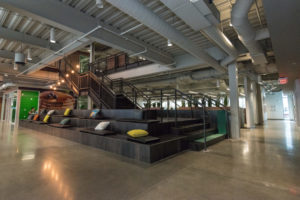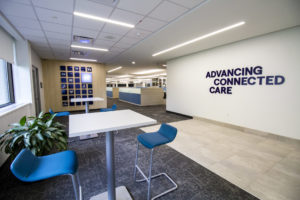Cost Modeling in the Construction Industry

At its most basic level, cost modeling is a process that helps Owners save money and increase productivity on a job site. This can range from small changes, like switching the door hardware to a less expensive option, to changing the building foot-print to reduce the cost per square foot for the rentable area, to completely changing the way the project runs.
The key to successful cost modeling is to start early. Ideally, the construction manager is involved in the design meetings with the architect and the client to offer expertise on what materials and processes would be best suited to reach the client’s goals.
With cost modeling, there is no such thing as starting too early. By being proactive at every phase, the entire team can ensure that sacrifices in quality don’t have to be made down the line. Instead, they can work together to develop creative ways to balance the components of the project with the client’s goals.
Cost Modeling at Oswald
At Oswald, we prioritize cost modeling (also known as Target Value Design) throughout the preconstruction process. Our goal is to ensure the Owner gets the greatest value for the construction dollar and is able to meet project cost goals.
Cost Modeling offers designers an opportunity to engage in the design conversation concurrently with those who will procure services and execute the design. By getting the right people involved at the right time even downstream players like contractors and specialty trade partners, everyone can find innovative ways to lower costs without sacrificing on scope or quality.
Our goal is to get you the highest quality for the most reasonable cost. If necessary, we determine alternatives with equal or higher impact to benefit the project’s goals.
We are Owner advocates. As Owner advocates, we will review the aspects of the project that may not contribute much long-term payback to the final product. We work with the design team on the project to raise relevant questions at the beginning of each successive phase of design.
At Oswald, our cost modeling efforts are a continuous process. We understand that plans change, so therefore we need to be flexible and resourceful. That’s why we look at the building process as a whole, from groundbreaking to project close-out. We consider the longevity, maintenance, quality of systems, and materials proposed against the cost to install and purchase.
Cost modeling at Oswald is accomplished through our constructability reviews, materials compatibility, alternate materials selections, and life span analysis. We analyze the entire building’s systems and programming.
Recent Cost Modeling Projects
Check out some of our most recent cost modeling projects below. Contact us for more information about our construction processes and how Oswald can help you take your building to the next level.

Empower Media Marketing Headquarters
Oswald worked closely with the project owner and subcontractors early on in the project to establish allowances for each trade. By developing allowances early on, Oswald easily managed budgets throughout the project and could adjust accordingly. This method proved beneficial when evaluating exterior finishes.
By working with subcontractors, the team was able to refine the lead time and keep the project on schedule. In addition, the Oswald team worked closely with the MEP HVAC subcontractor to identify the most efficient option for additional cost savings. The new Empower office was completed on time and on budget.
Mercy Health Medical Office Building
Oswald worked with Mercy Health and GBBN throughout schematic design, design development, and construction development. In doing so, Oswald was able to control the quality of subcontractors while maintaining the budget.
Working closely with subcontractors allowed Oswald to price out a variety of mechanical systems to understand which option provided the most efficiency. Overall, working with subcontractors on material costs and lead times allowed Oswald better control of the budget to establish the GMP.
Hill-Rom Innovation Lab
Initially, Hill-Rom worked with a different contractor to develop their budget. That budget was nearly $1 million dollars over what Hill-Rom intended to spend. Upon coming on board, Oswald worked alongside Hill-Rom and the architect, GBBN to develop a new budget.
Oswald, GBBN, and subcontractors evaluated different cost-saving options and finished materials which would ultimately give the owner $1.3 million back in contingency. While reworking the budget, Oswald helped Hill-Rom identify opportunities to minimize their moving and technology budget. This helped free up their overall construction budget.


